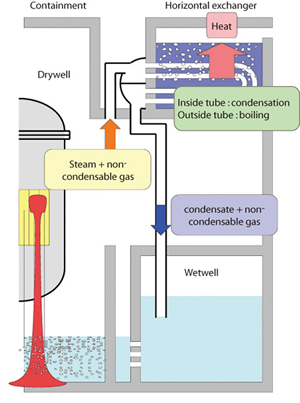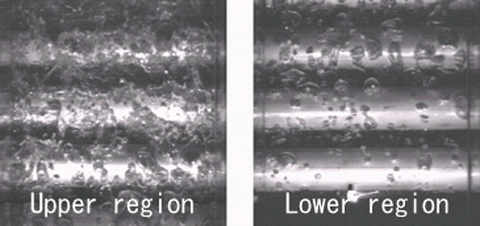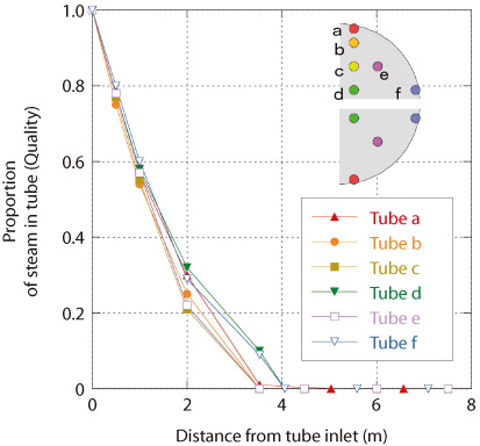
Fig.5-17 Schematic view of PCCS using horizontal heat exchanger

Fig.5-18 Secondary-side flow at heat exchanger

Fig.5-19 Proportion of steam in tube (Quality)
The containment of a light water reactor confines radioactive materials inside. To assure this function, the containment has a safety spray system using pumps to suppress the containment pressure increase even if large amount of steam is generated in the containment. This safety feature is very important, but it may fail during a severe accident. A Passive Containment Cooling System (PCCS, Fig.5-17) that is driven by natural forces has been invented as the backup system. A PCCS drives the steam in the drywell to the PCCS heat exchanger using pressure difference, and condenses the steam utilizing pool water outside the containment to suppress the containment pressure increase. We proposed a new type PCCS that employs a horizontal heat exchanger, and confirmed the capability of the new PCCS.
The uniformity of the condensation distribution among the condenser tubes of the horizontal heat exchanger was experimentally confirmed using a prototypical-size test facility. A non-uniform condensation distribution would reduce the total heat removal capability of the heat exchanger, since some steam would flow out without condensation. Although the heat exchanger has a non-uniform distribution in the secondary-side flow due to boiling as shown in Fig.5-18, the effect on the local heat removal rate is slight, as shown in Fig.5-19. The effect of non-uniform boiling heat transfer is reduced by thermal conductivity across tube wall, resulting in rather uniform heat transfer to the non-uniform secondary-side flow among the tubes.
We confirmed that the thermal hydraulic characteristics of the horizontal heat exchanger fully satisfy the design requirements for a PCCS heat exchanger.